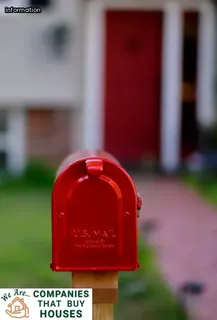When it comes to understanding North Dakota land titles and quitclaim deeds, the process of completing a quit claim deed can seem daunting. It's important to understand the requirements, filing processes, and writing of a quitclaim deed before proceeding with a transaction.
A quitclaim deed is used in North Dakota when transferring real estate from one person to another without a warranty of title. The grantor must have legal authority to transfer ownership, as well as sign the quitclaim deed in front of two witnesses or a notary public.
After signing the document, it must be filed in the county recorder's office for it to become effective. When preparing the document for filing, make sure that all information is written legibly and accurately including names, dates, addresses and other required details.
Additionally, if there are any encumbrances on the property or prior liens present it should be listed on the form as well. It's also important to contact your local government office concerning fees associated with filing a deed or any other applicable taxes due at closing.

When it comes to real estate transfers, a North Dakota Quit Claim Deed is a fast and easy way to complete the process. This type of deed is ideal for quick exchanges of property between family members or friends, or for transferring property from one party to another after the sale of a home.
It’s important to note that this type of deed does not guarantee that title is valid; rather, it simply transfers whatever interest you already have in the property. Because of this, it’s important to use a quit claim deed in situations where title ownership is already clear and without dispute.
Additionally, if you are uncertain whether or not you have any legal rights to the property, using a quitclaim deed may result in future problems due to title issues. Legal counsel should be consulted before using this type of deed if there is any doubt as to your rights or those of the other parties involved.
Completing a North Dakota quitclaim deed to transfer a house requires specific information from the parties involved. The grantor, or seller, must provide their full name and address, marital status, and the legal description of the property being transferred.
The grantee, or buyer, must provide their full name and address as well as the date of purchase and consideration paid for the property. All parts of the form must be signed in front of a notary public who will also need to fill out relevant information such as their name and commission expiration date.
Additionally, all documents related to the sale must be included with the deed for filing with the county recorder. It is recommended that a professional copy of any related documents is made prior to submission in order to protect against potential loss or damage during filing.

In order to complete a North Dakota Quit Claim Deed for a house, it is important to understand who can sign the deed. Typically, the deed must be signed by all parties with an interest in the property including the current owner(s).
All signatures must be notarized and witnessed if required. In some cases, an attorney may be able to act as an agent for one of the parties involved in signing the deed.
Additionally, if a party does not have mental capacity or is not physically able to sign, then their legal representative may be able to sign on their behalf. It is important to note that all individuals signing must include their full name and address when signing the deed.
Furthermore, it is recommended that all parties involved get independent legal advice before signing any documents related to a North Dakota Quit Claim Deed for a house.
Completing a North Dakota Quit Claim Deed for a house is an important step when transferring the ownership of property. Before filling out the blank form, it is important to understand the requirements that must be met and completed in order to file the deed.
First, all parties involved in the transfer must provide their full legal names. Additionally, they must include their mailing addresses and sign the deed in front of a notary public.
The grantor should have sufficient evidence that they are legally allowed to transfer ownership of the property. This could be in the form of a deed or title with their name on it.
Furthermore, it is essential to list any liens or mortgages associated with the property being transferred. Finally, all signatures must be witnessed by another individual aside from the notary public.
After all these steps have been taken care of, you can write out your quit claim deed on a blank piece of paper and have it notarized as required by law.

North Dakota is home to a variety of legal documents, but the most common type is the Quit Claim Deed. It allows individuals to transfer their real estate property rights without warranties or guarantees.
The document is commonly used when selling a house in North Dakota, as it helps to quickly and easily transfer ownership. When completing a Quit Claim Deed for a house in North Dakota, it is important to note certain requirements that must be met.
These include filing fees and other paperwork, as well as specific wording in the Deed itself. Additionally, there are certain rules around who can sign the Deed and how it should be written.
Knowing these items beforehand will help ensure a smooth process when transferring property rights in North Dakota.
A North Dakota Quitclaim Deed can be a great asset for homeowners in the state. It offers several benefits, including allowing the transfer of ownership from one party to another without any warranties of ownership or title.
This type of deed also allows for quick and easy completion of the transfer process since it does not require any additional paperwork or filing fees beyond what's necessary to record the deed. Furthermore, it is cost-effective because there are no taxes or other fees associated with completing the transfer.
Finally, it provides protection to both parties involved by limiting liability should a dispute arise regarding ownership rights or title claims later on.

Not filing your North Dakota Quitclaim Deed can have a variety of consequences, some of which can be difficult to recover from. When you don't file a Quitclaim Deed in North Dakota, it can delay the transfer of property ownership rights.
This could mean that you won't have the legal authority to make decisions on the property, such as making improvements or selling it. In addition, not filing a Quitclaim Deed in North Dakota may lead to an unclear title and a dispute over who owns the property.
If this happens, it could end up creating long-term financial and legal problems for everyone involved. Finally, when someone does not file their North Dakota Quitclaim Deed in a timely manner, they may be liable for fines or other penalties from local authorities.
By understanding the requirements for completing and filing your Quit Claim Deed in North Dakota, you can avoid these potential consequences and ensure that your transfer of property rights is legally binding.
Title insurance is an important part of completing a North Dakota quitclaim deed for a house. When filing the quitclaim deed, title insurance must also be considered to protect the property and its new owner.
The title insurance company will investigate the validity of the claim and make sure all parties involved are in agreement with the transfer, thus avoiding any potential legal issues. When purchasing title insurance, it is important to ask questions about how the quitclaim deed will affect it.
Generally speaking, title insurance companies recognize quitclaim deeds as valid titles but may require additional documentation to verify the ownership of the property. It is therefore important to make sure that all documentation related to a North Dakota quitclaim deed is completed properly so that title insurance is not affected negatively.
Knowing how title insurance is affected by North Dakota quitclaim deeds can help ensure that everything goes smoothly during and after filing for a transfer of ownership for a house or other real estate property.

Using a North Dakota Quitclaim Deed in estate planning strategies can be an effective way to transfer real estate property. A quitclaim deed is a legal document that conveys ownership of real property from one person to another without warranties or guarantees, and it generally requires minimal paperwork.
To complete a North Dakota Quitclaim Deed, the grantor must provide their personal information, such as name and address, as well as the name of the grantee and a description of the property being transferred. The deed must also be notarized by two witnesses and both parties must sign it for it to be valid.
It is important to note that North Dakota does not require recording of quitclaim deeds; however, if you choose to do so, it may help protect your rights in case of disputes between parties down the road. In addition, filing with the county register's office can provide evidence that title has been transferred in case there are any future issues related to ownership.
By understanding the requirements and preparing all necessary paperwork correctly, you can use a North Dakota Quit Claim Deed in your estate planning strategies with confidence.
When filling out a North Dakota Quitclaim Deed for a house, it's important to understand what property rights the grantor retains. A quitclaim deed is a document that transfers any interest or claim the grantor has in the property to the grantee, but does not provide any guarantee of title.
This means that if there are liens or other encumbrances on the property, the grantee will be responsible for them. The grantor does retain certain property rights such as rights associated with mineral interests, water rights and timber acreage.
The grantor also retains their right to receive proceeds from insurance claims filed against the property and any tax refunds related to the property. Furthermore, they maintain any legal right of possession they had prior to filing the deed.
It's essential that both parties understand all of these rights and responsibilities before completing a North Dakota Quitclaim Deed for a house in order to ensure smooth ownership transition and avoid potential issues down the line.

Once the North Dakota Quit Claim Deed for a house is completed, it must be presented to the county recorder where the property is located. The requirements to record a quit claim deed document include having an original, notarized copy of the deed with any accompanying documents such as a marital status affidavit or death certificate if applicable.
It is recommended that two copies of the quitclaim deed be submitted to the county recorder for recordation. When filing your quitclaim deed document, you must provide proof of payment, such as a cashier's check or money order, along with an acknowledgment form and cover sheet.
Depending on local regulations, there may also be additional forms needed for filing purposes. Writing a North Dakota Quit Claim Deed properly requires adhering to legal guidelines and language.
The grantor must provide detailed information about the property including its exact address and legal description as well as their full name, address, and signature. The grantee’s name should also appear in this section along with any other pertinent information such as whether they are married or single.
After completing all required sections accurately, both parties can sign and have their signatures notarized before submitting it to the appropriate county office for recording.
In North Dakota, there are a variety of legal documents that require different forms and procedures. If you are looking for sample forms to help with other types of legal documents, the North Dakota Secretary of State website is an excellent resource.
Additionally, the North Dakota Attorney General website has a section devoted to providing sample legal forms and documents. The North Dakota Supreme Court also offers a collection of legal forms on their website as well as other resources related to court rules and procedures.
For help with specific types of documents, the local clerk’s office in each county can provide assistance with finding exactly what you need. Additionally, many organizations throughout the state offer services for those seeking legal advice or assistance in filing certain types of documents such as quit claim deeds.

Finding the right online resource to help with completing a North Dakota Quit Claim Deed (QCD) is important in order to ensure that all of the required information is included in the document. The North Dakota Real Estate Commission website offers an overview of the process and provides templates for creating QCDs.
Additionally, legal websites such as Nolo and Legal Zoom provide more detailed information on how to create QCDs as well as downloadable forms and helpful FAQs. It may also be beneficial to consult a local attorney who specializes in real estate law if additional help is needed.
Finally, it's always wise to double check your work with the ND Real Estate Commission before filing the completed QCD.
When completing a North Dakota Quit Claim Deed (QCD) for a house, it is important to understand the potential tax implications. Generally speaking, transferring property by Quit Claim Deed is not subject to gift taxes or capital gains taxes.
However, when transferring real estate in North Dakota, you must pay transfer tax which is calculated as 2% of the purchase price of the property or the assessed value – whichever is higher. Depending on your situation, this form of deed may also have other financial and legal implications that should be discussed with an attorney before proceeding.
It is important to note that any outstanding mortgage balance must be paid off in full prior to transferring the deed, and if necessary, current taxes must also be paid before the transfer can take place.

Filing a Quit Claim Deed (QCD) in North Dakota requires that certain legal requirements be met, such as proper execution and filing of the document. In order to properly execute the QCD, the grantor must sign the deed before a notary public and have their signature notarized.
Each party involved in the transaction should also print their name on the deed. The document should then be filed with the county recorder in which the property is located.
Writing a QCD is generally straightforward and simply involves providing basic information such as names of parties involved, description of property, and date of signing. It is important to ensure that all identifying information for each party is accurate and up-to-date so that there are no issues when filing with the county recorder's office.
Additionally, it is wise to keep a copy of the completed QCD for your records in case any questions arise in the future.
In North Dakota, a Quit Claim Deed (QCD) is the most commonly used document when transferring ownership of a house. However, there are other documents that may be used in place of a QCD in ND.
These include Warranty Deeds, Trust Deeds, and Special Warranty Deeds. Each of these documents serves to transfer title from one owner to another but with varying levels of protection for both parties involved in the transaction.
Additionally, there are 18 exemptions from transfer taxes with a QCD in ND which can help reduce the overall cost associated with the transfer. After executing a QCD in ND, it must be properly terminated if either party decides to revoke it before the deed is recorded.
This process requires filing certain paperwork with the county recorder's office and following any applicable state laws and regulations. Finally, it's important to understand all legal requirements for validating and registering a QCD in ND as this will ensure that the deed is legally binding and enforceable by courts throughout the state.
Filing a quit claim deed in Minnesota is fairly simple and straightforward. To complete the process, you will need to obtain a North Dakota quit claim deed form and fill it out accurately.
The document should include the names of all parties involved, along with the legal description of the property being transferred. You will also be required to provide a valid reason for transferring the title, such as marriage or divorce.
Once everything is filled out correctly, you can submit it to your county recorder's office for processing. Before filing your quit claim deed, you should make sure that all parties involved have signed and dated it.
Furthermore, if there are any liens on the title, these must be addressed before submitting it to the county recorder's office. After all fees are paid, the transfer of title is officially complete and recorded in public records.

In order to file a quit claim deed in South Dakota, the document must be completed, signed and notarized. To complete a North Dakota quit claim deed for a house, you will need to include certain information, such as the names of the grantor and grantee, a legal description of the property being transferred and other details.
You must also provide proof of ownership or title insurance if requested by either party. Once complete, it is important to make sure that all documents are signed properly; this includes having two witnesses sign the deed as well as the grantor and grantee.
Once all documents are signed and notarized, they should be submitted to your local county clerk's office for filing. It is important to note that filing requirements vary between counties so make sure you check with your local clerk before submitting your paperwork.
Completing a quit claim deed in Iowa is a straightforward process, but it is important to understand all the requirements and filing procedures to ensure that everything goes smoothly. To start, you will need to acquire a blank quit claim deed form or template from either your county recorder's office or an online source like LegalZoom.
Once you have obtained the form, it needs to be filled out correctly by indicating the property's address, legal description, and tax parcel number. The grantor (seller) should also provide their name, address, and signature on the document.
The grantee (buyer) should provide their name and address as well. Next, both parties must get the deed notarized before filing it with the county recorder's office.
After filing, you may be required to pay recording fees depending on your county's regulations. To make sure all documents are properly filed and recorded in a timely manner, consider using an attorney or title company who can help guide you through the process.
Finally, if there is more than one grantor/grantee listed on the form then each party must sign off before submitting it for recording. With these steps completed correctly, your quit claim deed will be officially registered in Iowa!.
In order to file a quit claim deed in Iowa, it is important to have the correct information and forms. The North Dakota Quit Claim Deed is specific to this state, and must be filled out correctly in order for it to be accepted by the county recorder's office.
Before starting the process, make sure you know what requirements need to be met in order to successfully complete a quit claim deed in Iowa. Requirements include having all parties involved sign the document, notarizing the document and having it properly filed with the county recorder's office.
When writing a quit claim deed for a house in North Dakota, make sure that all of the necessary information is included such as legal names of all parties involved, property address and legal description of property being transferred. Once completed, take your quit claim deed to your local county recorder's office where it will be reviewed and filed with the applicable court or registry.
A: In North Dakota, to file a Quit Claim Deed on a house, you must obtain the deed from the grantor, prepare it with the appropriate language and signatures, and then record it with the Register of Deeds office in the county where the property is located. All parties must also be present to sign before a notary public or other authorized official.